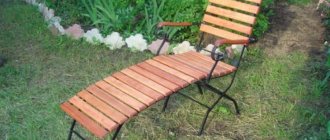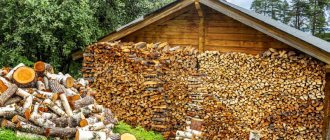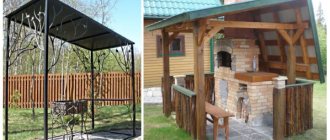Blueberries are still a new guest in our garden plots and cottages. Found mainly among avid berry lovers. But time passes - and the well-deserved popularity of blueberries has led to the fact that many lovers want to plant this wonderful berry.
Brief overview of the article
- Reproduction methods
- The easiest way is to divide the bush
- Cuttings
- Types of cuttings
- Cuttings using lignified cuttings
- Storing woody cuttings
- Pruning cuttings
- Rooting lignified cuttings
- What soil is needed for germinating lignified cuttings?
- Cuttings with green cuttings
- Preparation of green cuttings
- What soil is needed for germinating green cuttings
- Rooting green cuttings
- Water for irrigation
- Shrubs from root shoots
- Layerings
- Photos of blueberries
Reproduction methods
Garden blueberries can be propagated in various ways. There are two ways to propagate blueberries:
Vegetative (by dividing the bush, cuttings, layering, etc.). The vegetative method allows you to quickly (after 2-3 years) try the first berries of your own harvest. With this method, the varietal characteristics of the original bush are precisely preserved.
Generative (seed). The method is not for everyone. Firstly, it requires time, careful care, and precise adherence to temperature conditions during stratification and germination of seeds. Secondly, there is a possibility that the blueberry bush from which the seeds were taken is a hybrid, and the seeds will not retain the characteristics of the original bush at all. Therefore, propagation of blueberries by seeds is used mainly by breeders when creating new varieties and hybrids.
The disadvantage of garden blueberries is that they do not take root well, and the gardener will have to make considerable efforts for vegetative propagation.
Difference between cuttings and propagation by seeds
The difference between growing blueberries from seeds and cuttings is genetic variability. As just mentioned, the branches are identical genetic clones of the parent plant because it is vegetative or asexual propagation since the genes come from only one parent. Seeds, however, can produce plants that are different from their parents because seeds are produced by sexual reproduction, receiving genes from male and female to form. Since they are a hybrid of two sets of genes, the seeds can be used to grow a shrub that is different from the parent.
In this article we will discuss the propagation of highbush blueberries by both woody and green cuttings with leaves at home. Let’s not forget to mention the method of propagation by layering for those who are in no hurry, but want to turn existing plants into a series of productive bushes. You will learn how to produce blueberry seedlings or increase the number of bushes in your garden plot using one of the methods described below.
Many gardeners propagate blueberries in the summer, as the method seems simpler and faster to them, but woody cuttings make it possible to propagate special varieties of this crop. All methods give high results and a large percentage of rooted and healthy plants if the technology is followed correctly.
When choosing a donor, substandard plants should be avoided. By selecting specific rows or individual clumps of uniform, healthy parent plants that are easiest to find during flowering and harvest. Remember that blueberry viruses and fungal diseases can be transmitted from mother plants of infected bushes.
Relative rooting ability for selected varieties:
Easy to root : Blueetta, Patriot, Northland, Bluray, Berkeley, Coville, Jersey. Moderate rootedness : Earliblu, Collins, Olympia, Herbert, Elliott. Weakly rooted : Spartan, Bluejay, Ivanhoe, Bluecrop, Darrow.
The easiest way is to divide the bush
The traditional garden method for quickly propagating blueberries is dividing the bush. Allows you to quickly obtain productive plants. Suitable for low growing varieties.
Digging and dividing the bush is carried out in early spring - this way the resulting bushes take root better. Under no circumstances should plants be divided at the time of flowering and ripening of the crop.
To divide, the large mother bush is carefully dug up along with a lump of earth. Blueberry roots are superficial, so digging up the entire bush is easy. The bush is divided by hand, preferably without the help of a knife. Usually divided into 3-4 parts. Each part of the bush should have a developed root, preferably no shorter than 50 mm.
The roots and section site are treated with antiseptics and stimulants. It is advisable to add peat to the planting hole. The hole is spilled with water, the roots are carefully straightened and distributed, covered with earth, and watered.
The bush is watered regularly for three weeks. It is advisable to mulch the root circle.
Cuttings
The most common and familiar way to obtain seedlings is to propagate blueberries from cuttings. With this method, the bush is not injured; small pruning only stimulates the growth of new shoots.
Taking cuttings is the simplest procedure. Well-proven technologies for germinating cuttings allow both experienced and novice amateur gardeners to use this method.
Cuttings using lignified cuttings
For cutting lignified cuttings, select annual, well-ripened branches with large growth (great length). The branches should be covered with dense bark.
The optimal time for blueberry cuttings is early spring, before sap flows and buds begin to swell. The mother bush should be in deep rest.
Storing woody cuttings
Until rooting, cuttings are stored at a temperature of +5°C in a refrigerator or cellar. Cuttings prepared in autumn are stored all winter, spring cuttings - for one month. Therefore, it is recommended to harvest cuttings in the spring. The cuttings are tied into a bundle or laid in layers and sprinkled with a mixture of sawdust and snow.
Harvested branches should not become soaked, moldy, or even dry out. An increase in temperature during storage is also unacceptable.
Caring for blueberry cuttings
For successful rooting, blueberry cuttings need to create conditions of high humidity, so cassettes with seedlings are placed in a small greenhouse and sprayed regularly. If irrigation is necessary, only rainwater is used. The temperature in blueberries should not rise above 22 and not fall below 10 degrees. This is the optimal range to protect the plant from drying out and rotting.
Blueberry cuttings should spend at least 2 months in such conditions. Only at this moment will their first roots begin to form. After waiting another 2 weeks, it is worth giving them stimulating feeding by spraying them with a solution containing microelements and amino acids.
Please note that if you carried out cuttings in the summer, then transplanting blueberry seedlings will only need to be done next spring. Therefore, it is important to take care of their shelter for the winter.
Pruning cuttings
The cuttings are rooted in a specially prepared substrate. For rooting, it is necessary to maintain a temperature of at least +26°C.
Before planting, cuttings are cut to the following length:
- 10 cm for low-growing blueberry varieties;
- 15 cm for tall varieties.
Cuttings are cut: from above, right at a distance of 20 mm from the bud; from below, obliquely at an angle of 45° at a distance of 200 mm under the lower kidney.
Vaccination
- For grafting, they choose not basal shoots, but shoots from the main trunk, located slightly higher from the growth point.
- In December, select eight 50 cm woody branches and cut them. Lubricate the wounds with garden varnish.
- Shorten the upper part so that a 20 cm stalk remains.
- At the beginning of spring, the grafting procedure begins using the splitting method.
Rooting lignified cuttings
Cuttings are usually rooted in a heated greenhouse - temperature is very important for the germination of cuttings. Root either in a separate box or in a garden bed. When rooting in the garden bed, the layer of soil is removed and the prepared substrate is poured.
The distance between plants is 100 mm if the plants will germinate for a long time, and 50 mm if the germination period will be short. The distance between rows is 100 mm.
Water the soil, bury the cuttings, and water generously again. In the future, they water by sprinkling - watering from a hose can wash away the plantings.
The box or bed is covered with polyethylene - to germinate blueberry seedlings, high but excessive humidity is required. To reduce excessive humidity, plantings must be regularly ventilated.
It takes two months for woody cuttings to take root. And only then can you remove the polyethylene (first open it slightly, and only remove it after a few days). Then the future bushes are planted with a clod of earth in a permanent place.
With this method of propagating blueberries and with good care, within three years the first harvest will begin on the bushes.
How to cut blueberries and at what time
To propagate garden blueberries from woody cuttings, planting material is harvested in early spring or late winter, in regions with a warmer climate. Cuttings are often combined with general pruning of shrubs. The main rule when collecting lignified cuttings is that the mother plant is in a dormant period. To obtain planting material, annual shoots that have matured well are cut off.
A video about the propagation of garden blueberries by green cuttings shows that planting material is collected in mid-summer. Harvesting time is limited to several weeks during the plant's dormant period. Depending on the growing region and weather conditions of the current season, the collection of green cuttings begins at the end of June. At this time, the first wave of shoot growth is completed, and the next one has not yet begun.
Planting material in the case of green blueberry cuttings is collected from the current year's growth shoots or branching shoots.
How to propagate blueberries from woody cuttings
Chopped woody shoots are tied in bunches. Before planting, they must be stored in a refrigerator or a specially constructed glacier, where the cuttings are left in an alternating layer of snow and sawdust. The temperature during storage should be about +5°C. During this period, the cuttings must be periodically inspected to prevent them from drying out or developing mold.
To propagate blueberries from cuttings at home, prepare a place in the greenhouse in advance. An acidic substrate is poured into a separate box. The planting mixture is prepared from 3 parts of high-moor peat and 1 part of river sand. When planting directly in a greenhouse bed, the soil is removed from it to a depth of 20 cm and replaced with something suitable for growing heather crops.
Depending on the equipment of the greenhouse, cuttings are planted in the spring a month after storing them in the refrigerator. In the video about the propagation of blueberries by cuttings, you can see that the prepared shoots are shortened to 10-15 cm for tall varieties of blueberries and to 7-10 cm for low-growing varieties. The lower cut is made obliquely under the bud, the upper cut is made even, 1.5-2 cm above kidney.
Depending on the expected time spent in the greenhouse, the cuttings are planted on the bed more densely or sparsely according to a 5 by 5 cm or 10 by 10 cm pattern. The cuttings are stuck vertically into the soil mixture and watered. To create the necessary microclimate, arcs are installed above the bed and the planting is covered first with plastic film, then with any non-woven material. In the greenhouse it is necessary to maintain a high air temperature in the range of +26... +28°C and constant humidity. Watering is carried out by sprinkling.
When blueberries are propagated using woody cuttings, rooting takes about 2 months. During this time, plants require constant care. The greenhouse is regularly ventilated, maintaining a constant temperature of the air and soil without sudden changes. The seedlings are watered and treated for diseases.
After the cuttings take root, the cover is removed. Before planting in a permanent place, seedlings are grown for several years. With good care, results from blueberry propagation by cuttings can be obtained in 2 years.
Propagation of blueberries by green cuttings
With the method of green cuttings of garden blueberries, planting material is harvested early in the morning to prevent dehydration of the stem. The side shoot is pinched at the base with the thumb and forefinger and cut off with a sharp downward movement so that the shoot remains with a “heel” - part of the bark from the main branch. A strip of wood that is too long is cut with a disinfected sharp knife or pruning shears. The length of the cutting should be about 10 cm. The lower leaves are torn off, leaving only a few upper ones, which are shortened to half.
To grow green cuttings, mix equal parts of high-moor peat and rotted pine litter. Planting material is placed in a prepared substrate in a greenhouse. The cuttings are placed in a common planting container or cassettes so that the leaves do not touch each other. When caring for plantings, it is important to maintain high air and soil temperatures. When propagating blueberries from green cuttings, their leaves should always remain moist; for this, frequent spraying is carried out or a fogging system is installed.
Advice! For watering blueberry seedlings, do not use chlorinated water.
If blueberries are propagated by green cuttings in a greenhouse, additional shelter is not required in the summer. With proper care, cuttings will take root in 4-6 weeks. In autumn, young plants are covered or transferred to a cool room. In the spring of the next season, the sprouts are transplanted into larger containers for further cultivation.
The survival rate when propagating blueberries from green cuttings is slightly lower than from lignified ones. But harvesting green cuttings is easier and does not require storage space in the winter. Lignified cuttings are collected from formation shoots, which are fewer on the bush than branching shoots, from which planting material for green cuttings is taken.
The cutting method is one of the only possible ways to propagate tall blueberry varieties.
How to root a blueberry cutting
Blueberries take a long time to take root, so before planting the cuttings, the lower cut is dipped in a special powder that stimulates the formation of roots. For heather crops, which include blueberries, root growth accelerators based on indolylbutyric acid are also used. If all growing conditions are met, the average survival rate of sprouts when cutting blueberries is about 50-60%.
Preparation of green cuttings
In summer, blueberry plants have a dormant period - between the first and second waves of growth. Most often, this period begins in the heat at the end of July, but sometimes it can shift slightly to the beginning of the month, depending on the region and the temperature regime of a given summer. For successful blueberry cuttings, cuttings must be harvested during this period of relative dormancy.
Choose healthy branches with plenty of leaves. Green twigs are picked early in the morning so that the stalk breaks off along with the intact heel. Therefore, green cuttings are not cut out. The optimal length is 100 mm. Under no circumstances should the cuttings dry out or lie in the sun. The lower leaves are torn off.
What soil is needed for germinating green cuttings
They use a mixture of peat and acidic pine litter (well rotted).
Rooting green cuttings
It is convenient to use fairly large cassettes or boxes and pots. The distance between cuttings is approximately 70 mm. The entire part of the cutting without leaves is buried in the substrate.
Water the cuttings generously, then water them drips and regularly spray the leaves. It is necessary to ensure that germination occurs at a constant temperature of +26-28 °C.
If it is possible to create high humidity in the greenhouse, then the planting does not need to be covered with plastic film. The seedlings will take root in 5-6 weeks.
In autumn, young seedlings are covered in a cool, bright room and stored until spring. You can insulate the bushes very well and leave them outside (this depends on the region and the minimum temperature in winter; this storage method is not possible in all regions of Russia).
When planting seedlings in spring, it is necessary to cover them with film for a week or two and maintain optimal humidity.
Further care
Blueberries are an undemanding plant and are easy to care for. Below are the main points for caring for crops.
Watering
Blueberries are harmed by dry soil, so you will have to water the plant often. It is better to use a watering can for watering. It will not wash away the mulch, which must be near the plant trunk. The optimal soil moisture level is 60–70%. To maintain such humidity, you should water the bush generously 2 times a week in the evening . In July-August, the number of waterings can be increased up to 3 times. This will improve the harvest and help the formation of flower buds for next year.
Despite the fact that blueberries are a moisture-loving plant, they do not tolerate stagnant water, so during planting, be sure to provide drainage in the hole
During periods of drought and heat, shrubs can be sprayed with water in the evening. This way you will help the plant avoid stress that it may receive during high temperatures.
Top dressing
Blueberries do not respond well to organic fertilizers, such as green manure, manure and compost. The only thing that suits it is acidic high-moor peat or half-ripe pine litter. To feed the crop, it is better to use mineral fertilizers . It is necessary to start feeding the bushes 3 years after planting.
Find out in more detail how and how to properly feed blueberries.
Mineral fertilizers for blueberries:
- Nitrogen . Stimulates shoot growth and fruit formation. It is enough to apply 60 g per year to the bush.
- Phosphorus . Affects yield and disease resistance. 50 g per year is enough for one bush.
- Potassium . Helps the plant resist diseases. With fertilizer, bushes can more easily withstand winter and drought. It is enough for one bush to receive 40 g of the substance per year.
Blueberry fertilization plan:
- At the beginning of spring , when the plant is just beginning to awaken, it is necessary to apply nitrogen fertilizers under the bush.
- During the budding period, blueberries can be sprayed with a growth stimulator.
- During the period of berry formation, the bushes can be fed with complex fertilizers.
- In August, it will be useful for the plant to receive potassium-phosphorus fertilizers.
Mulching
Mulching is a mandatory step in caring for blueberry bushes. You can carry out the procedure using:
- sawdust;
- straw;
- pine bark;
- leaves;
- pine needles
Despite the fact that with a layer of mulch in the spring the buds open later, this is only better for the plant.
Thus, early frosts will not harm the future harvest. The optimal layer of mulch should be up to 15 cm . The procedure will not only help maintain moisture in the soil, but will also prevent the growth of weeds. Mulching also protects the root system of the plant from low temperatures in winter.
Important! As a result of mulching with fresh sawdust, the plant increases the consumption of nitrogen from the soil, so in the spring, when mulching, additionally feed the blueberries with nitrogen fertilizers.
Trimming
It is necessary to begin pruning and shaping the bush from the third year after planting . Weak, damaged and diseased shoots are systematically removed. It is better to prune in the spring before the buds open. If the procedure is carried out in the fall, the cut site may suffer from severe frosts in winter.
During annual pruning, consider the following:
- Young bushes need to be pruned more heavily. This procedure stimulates plant growth.
- Only upright growths should be preserved, and low spreading ones should be cut off. There should be at least 5 annual shoots left on the bush.
- On fruiting bushes that are more than 5 years old, shoots older than 4 years should predominate.
- If the crown is very thick, you can cut out the inner old and weak branches.
- Remove small and thin branches. Leave only strong shoots and skeletal branches.
- After pruning, do not leave cut branches near the bush. It is better to burn them on the same day. This way you will prevent the development of infections on them.
Pruning largely depends on the blueberry variety:
- for bushes with wide crowns, cut off the entire top of the plant;
- in bushes with a more elongated shape, it is necessary to trim the strongest shoots to stimulate their growth;
- in bushes with a thick and dense crown, the most branched shoots are shortened;
- The most productive varieties of blueberries with a large number of branches require good thinning of the bush every year.
Did you know? The amount of antioxidants in blueberries exceeds that of any vegetable or fruit.
Breeding blueberries does not always give the desired result. The plant's survival rate is low. But if you follow all the advice given in the article, the crop will be healthy and strong, and numerous berries will be able to delight you for a long time in the garden and on the table.
Water for irrigation
Blueberries do not tolerate chlorinated water - they must be allowed to stand so that the chlorine is released. Do not water with cold water - stress is detrimental to seedlings.
Shrubs from root shoots
How blueberries reproduce from root shoots is clear from the name. Sprouts appear on the roots away from the mother bush. It is necessary to select large young shoots, carefully dig them up, and cut them off from the original bush with a sharp knife. Then plant it in the same way as a divided bush. It is necessary to carefully monitor soil moisture in the first 3-4 weeks after transplanting.
Description
The pulp of the fruit is very juicy and tasty, purple in color. In common parlance it is called: golubitsa, cabbage roll, gonobobel, gonobob, gonobol, water drunk, durnika, fool, fool, fool, drunkard, drunkard, drunkard, drunken berry, blue grape.
The berry received the interesting names “drunkard” and “foolish woman” due to its proximity in the wild to the swamp blasphemy. People who collected it experienced intoxication and dizziness and attributed these properties to the berry.
It grows from 30 cm to 1 m. It has a fibrous root system, dense, oblong leaves that turn red and fall off in the fall. The fruits remain hanging until frost. The shrub has high frost resistance and lives up to a hundred years.
Layerings
This method is used to propagate tall or medium-sized blueberry varieties. The advantage of the method: you get strong bushes with a complete root system. How to propagate blueberries by layering is easy to explain to inexperienced berry lovers. The method itself is very simple and reliable.
A lateral but strong branch is tilted and buried in a mixture of peat, pine litter or sawdust. The branch is pinned to the ground. The pinning area is often watered, and sometimes peat or substrate is added. There is no need to cover the branch with film.
It is better to start growing a new bush in the spring, then after two years it can be cut off from the mother bush, dug up with a clod of earth and planted in a permanent place. Be sure to add peat to the hole and water the bush regularly.
Propagation of garden blueberries by radical pruning
A method in which the bush is completely replaced with several new plants. In spring, cut off all shoots. Complex mineral fertilizer is applied under the remaining root in double dosage. Sawdust from coniferous trees is poured on top. The sawdust layer should be about 30 cm.
A small greenhouse is installed above the growing site to maintain the necessary humidity and growing temperature, as well as to protect young plants from sudden cold snaps. New shoots will soon appear in place of the cut shoots. But the development of its own roots will occur within two years. They are formed above the original root system, in a layer of sawdust.
After 2 years, young shoots with their own root system are separated from the mother bush and planted separately. With the method of pruning the bush and growing new replacement shoots, the bush is grown for several more years to obtain the first berries.











